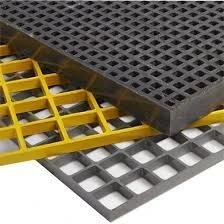loading...
- No. 9, Xingyuan South Street, Dongwaihuan Road, Zaoqiang County, Hengshui, Hebei, China
- admin@zjcomposites.com
- +86 15097380338
- Welcome to visit our website!
Exploring the Dynamics of Group Structures in Social and Organizational Contexts
Understanding GRP Structures A Comprehensive Overview
Glass Reinforced Plastic (GRP), commonly known as fiberglass, is a composite material made from a polymer matrix reinforced with glass fibers. It has gained significant attention in various industries due to its unique properties, including high strength-to-weight ratio, corrosion resistance, and ease of molding into complex shapes. This article aims to provide an overview of GRP structures, their applications, advantages, and considerations for use.
What are GRP Structures?
GRP structures are components or systems designed primarily using glass reinforced plastic. The reinforcement in GRP is typically provided by glass fibers, which are embedded within a resin matrix, offering enhanced mechanical properties. The manufacturing process of GRP can vary but often involves techniques such as hand lay-up, vacuum infusion, or filament winding. Each of these methods has its advantages and is chosen based on the specific requirements of the application.
Applications of GRP Structures
The versatility of GRP structures allows them to be utilized across a wide range of sectors
1. Construction In the construction industry, GRP is frequently used for building components such as beams, columns, and panels. Its lightweight nature reduces the overall load on structural frameworks and foundations.
2. Transportation GRP is widely used in the manufacturing of boats, automobiles, and aircraft components. The material's resistance to corrosion and weathering makes it ideal for marine applications, while in automotive design, GRP aids in achieving aerodynamic shapes without compromising strength.
3. Electrical and Telecommunications Due to its insulating properties, GRP is commonly used for electrical enclosures and telecommunications equipment. It protects sensitive equipment from environmental influences while ensuring safety.
4. Storage Tanks and Pipes GRP is an excellent choice for manufacturing tanks and pipes, especially for the chemical industry. The material's resistance to corrosion ensures the longevity and reliability of storage systems.
5. Renewable Energy In the wind energy sector, GRP is used extensively in the production of turbine blades. The lightweight and strong properties of GRP allow for larger blades that can capture more wind energy, thus enhancing efficiency.
Advantages of GRP Structures
1. Lightweight One of the most significant benefits of GRP is its low density compared to metals, allowing for easier handling and reduced transportation costs.
grp structures

2. Corrosion Resistance GRP's inherent resistance to chemicals and environmental damage makes it suitable for applications in harsh conditions where traditional materials would fail.
3. Design Flexibility The manufacturing processes associated with GRP allow for intricate designs and shapes that can be tailored to specific requirements, which is often more challenging with conventional materials.
4. Low Maintenance GRP structures require minimal maintenance, which can result in long-term cost savings for businesses and individuals alike.
5. Thermal Insulation GRP provides good thermal insulation, making it useful in applications where temperature control is essential.
Considerations for Using GRP Structures
While GRP structures offer numerous advantages, there are some considerations to keep in mind
1. Cost The initial cost of GRP materials can be higher than traditional materials, although this may be offset by lower maintenance costs over time.
2. UV Degradation GRP can be susceptible to degradation from ultraviolet light exposure if not properly treated. Applying protective coatings can mitigate this issue.
3. Fire Resistance Depending on the resin used, GRP may have varying degrees of fire resistance. It's essential to select appropriate materials for applications where fire safety is a concern.
4. Environmental Impact Although GRP is durable, its production and disposal can have environmental implications. Continuous advancements in recycling technologies are essential to address these concerns.
Conclusion
GRP structures represent a remarkable advancement in material science, offering a blend of strength, flexibility, and resistance that opens up a multitude of possibilities across various industries. As technology progresses and sustainability becomes a priority, the role of GRP in modern manufacturing and construction is likely to grow even more significant. Understanding the benefits and challenges associated with GRP will enable businesses and engineers to make informed choices for their projects, harnessing the full potential of this innovative material.
-
GRP Structures: The Future of Lightweight, High-Performance EngineeringNewsJun.20,2025
-
FRP Water Tank: High-Performance Storage for Corrosive and Clean Water SystemsNewsJun.20,2025
-
FRP Square Tube: The New Industry Standard for Chemical and Structural ApplicationsNewsJun.20,2025
-
FRP Pultruded Profiles: The Ultimate Choice for Lightweight Structural StrengthNewsJun.20,2025
-
FRP Handrails: The Safer, Smarter, and Stronger Choice for Modern InfrastructureNewsJun.20,2025
-
FRP Grating: The Smart Solution for Durable, Lightweight Industrial FlooringNewsJun.20,2025
-
Why Choose a Galvanized Water Tank for Your Storage NeedsNewsMay.21,2025
